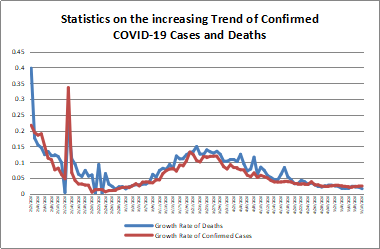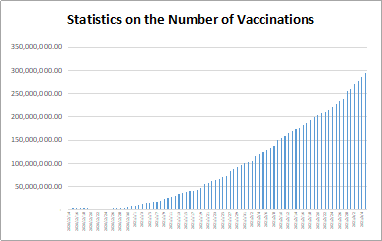FAO Releases Three Reports to Provide Food Price References and Cereal Production Forecasts for International Markets
Time:2022/03/11 BJT
1. Key concerns
On March 4, 2022, the Food and Agriculture Organization of the United Nations (FAO) issued three reports of the Monthly Food Price Index, Cereal Supply and Demand Brief and Crop Prospects and Food Situation, and analyzed and forecast the global cereal production as well as the crop and food situation in low-income countries this year based on the February increase in food price index.
The Food Price Index tracks monthly changes in the international prices of commonly-traded food commodities. According to FAO’s latest monthly report, the Food Price Index averaged 140.7 in February, up 3.9% month-on-month and 20.7% year-on-year, which represents a new all-time high, exceeding the previous top of February 2011. It is reported that the February rise of world food prices was led by large increases in vegetable oil and dairy product. The sharp increase in the vegetable oil price index was principally driven by sustained global import demand, which coincided with a few supply-side factors, including reduced export availabilities of palm oil from Indonesia, the world’s leading exporter, lower soybean production prospects in South America, and concerns about lower sunflower oil exports due to disruptions in the Black Sea region. The Dairy Price Index averaged 6.4% higher in February than January, underpinned by lower-than-expected milk supplies in Western Europe and Oceania, as well as persistent import demand, especially from North Asia and the Middle East.
FAO also released its latest Cereal Supply and Demand Brief, with preliminary forecast for worldwide cereal output in 2022. Global wheat production is seen on course to increase to 790 million tonnes, with anticipated high yields and extensive planting in North America and Asia, offsetting a likely slight decrease in the European Union and the adverse impact of drought conditions on crops in some of the North African countries. Global cereal utilization is now seen at 2 802 million tonnes, a 1.5% annual increase. Global cereal stocks ending in 2022 are forecast to grow slightly over the year to 836 million tonnes. On those estimates, the worldwide cereals stocks-to-use ratio would stand at 29.1%, marking an eight-year low, but still indicating an overall comfortable supply level, according to FAO.
FAO’s Global Information and Early Warning System (GIEWS) also released the latest Crop Prospects and Food Situation Report. According to the report, cereal production in the world’s 47 Low-Income Food Deficit Countries (LIFDCs) is expected to decline by 5.2% in the 2021/2022 marketing season compared to 2020/2021, pointing to an 8% increase in the aggregate import requirement by LIFDCs to 66.6 million tonnes. The report includes updates on the situation in the 44 countries currently identified as in need of external assistance for food as well as more granular updates to regional cereal production trends around the world, while also noting the risks to production and exports as well as to livelihoods related to the escalation of the conflict in Ukraine.
2.Briefing on COVID-19 Pandemic(Issue No.183)
According to WHO statistics, calculated numbers of confirmed COVID-19 cases and deaths reached 446,511,318 and 6,004,421 by March 8, 2022. South Korea, Germany, Vietnam, Russia and Japan were the five countries (regions) with the highest number of new confirmed cases in the past seven days. South Korea, Germany, Vietnam, Russia and Japan were the five countries (regions) with the highest number of new deaths in the past seven days.


https://covid19.who.int/
The ninth update of WHO’s living guideline on COVID-19 therapeutics includes molnupiravir and a recommendation that Casirivimab-Imdevimab not be used for patients infected with the Omicron variant. Statistics from Our World in Data, an online research site of the University of Oxford, presented that 10,881,334,881 doses had been administered globally by March 6, 2022. WHO updates its living guidelines on COVID-19 therapeutics for the ninth time and includes the new antiviral drug molnupiravir. This is the first oral antivirus drug to be included in the guidelines. It is given as 4 tablets (total 800mg) twice daily for 5 days, within 5 days of symptom onset. This update of the drug is based on new data from six randomized controlled trials involving 4796 patients, which is the largest dataset on this drug so far. As a new drug with little safety data, molnupiravir should be provided only to non-severe COVID-19 patients with the highest risk of hospitalization, such as unvaccinated people, older people, people with immunodeficiencies and people living with chronic diseases. Along with this recommendation, the ninth update of the guideline also includes the latest research progress on casirivimab-imdevimab, a monoclonal antibody cocktail. Based on evidence that this combination of drugs is ineffective against the Omicron variant of concern, WHO now recommends that it is only given when the infection is caused by another variant.

https://ourworldindata.org/covid-vaccinations
In terms of the restrictions taken by countries (regions), there are different levels of measures adopted against COVID-19. Most countries (regions) gradually relaxed their prevention measures while a small number of countries (regions) chose to maintain or upgrade their current restriction level. In America, the New York City government has officially lifted the requirement of wearing a mask at school and the vaccination in company from March 7. Canada has further relaxed its immigration policies during the pandemic, including that passengers have the option of using a COVID-19 rapid antigen test result, fully vaccinated travellers randomly selected for arrival testing will not be required to quarantine while awaiting their test result, as well as the removal of unnecessary travel advisories for Canadian residents travelling abroad. In Europe, France announced that it will abolish the "vaccination pass" on March 14, further easing the COVID-19 restriction measures. The "vaccination pass", which was introduced in France in 2021, is a vaccination pass that allows the holder to enter restaurants, cinemas and other places. In Belgium, the most of COVID-19 restriction measures have been lifted from March 7. The public will no longer be required to show their COVID-19 vaccination certificate or recovery certificate when entering restaurants, bars, museums and cinemas, and there will no longer be any restrictions on the number of people for indoor activities, while the wearing of masks will remain compulsory in places such as public transport, hospitals and nursing homes. In Oceania, the Director-General of Health and the COVID-19 Response Minister of New Zealand held a briefing to announce that the country entered the third phase of the fight against the Omicron variant from February 24, in which close contacts no longer need to be isolated, and the relevant authorities will no longer issue outbreaks of concern, yet providing assistance to self-isolated residents. In Asia, the Japanese government lifted the COVID-19 restrictive measures applicable to 13 prefectures on February 7. The restrictions for 18 prefectures including Tokyo and Osaka will be extended again until February 21. South Korea’s Central Disaster and Safety Countermeasures Headquarters said on March 7 that the risk level of the national COVID-19 pandemic last week was the highest level of "very high", and the risk in the capital and other areas was at a "very high" level. The risk of COVID-19 in South Korea is divided into five levels: "very low", "low", "medium", "high", and "very high", which has been raised to the highest level this time.


